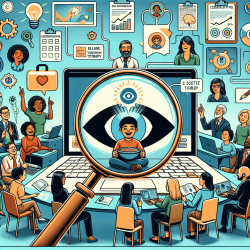Understanding Relative Energy Deficiency in Dance (RED-D)
The study titled Relative energy deficiency in dance (RED-D): a consensus method approach to REDs in dance provides critical insights into managing RED-D, a condition that mirrors the challenges faced in sports with Relative Energy Deficiency in Sport (REDs). This research is crucial for practitioners involved in dance therapy, particularly those providing online therapy services through platforms like TinyEYE.
Key Outcomes of the Research
The research identifies dance-specific pathways for diagnosing, managing, and preventing RED-D. These pathways are designed to be practical tools for clinicians, offering structured guidance on managing the complex condition of RED-D. The study emphasizes the importance of a multidisciplinary approach, involving expertise from sports medicine, endocrinology, dietetics, and psychology, among others.
Implementing Research Outcomes in Practice
Practitioners can enhance their skills by integrating the following strategies derived from the research:
- Adopt Dance-Specific Pathways: Utilize the diagnosis and management pathways outlined in the study to guide clinical decisions. These pathways are tailored to the unique physiological and psychological demands of dancers.
- Focus on Multidisciplinary Collaboration: Engage with professionals across various fields to provide comprehensive care. The research highlights the importance of collaboration in managing RED-D effectively.
- Enhance Screening and Diagnosis: Implement validated questionnaires like the LEAF-Q and DEAQ to support early identification and diagnosis of RED-D. Regular screening can help in early detection and intervention.
- Educate on Nutritional Needs: Educate dancers on the importance of adequate energy intake relative to their energy expenditure. This education is crucial in preventing RED-D and supporting recovery.
Encouraging Further Research
While the study provides a robust framework for managing RED-D, it also highlights areas requiring further research. Practitioners are encouraged to engage in research activities to validate and refine the diagnostic tools and management strategies for RED-D. This ongoing research will contribute to better outcomes for dancers and enhance the effectiveness of online therapy services.
Conclusion
By implementing the outcomes of the RED-D research, practitioners can significantly improve their skills and provide better care for dancers. This research not only offers practical tools but also encourages a collaborative approach to managing RED-D, ultimately leading to improved health and performance outcomes for dancers.
To read the original research paper, please follow this link: Relative energy deficiency in dance (RED-D): a consensus method approach to REDs in dance.










